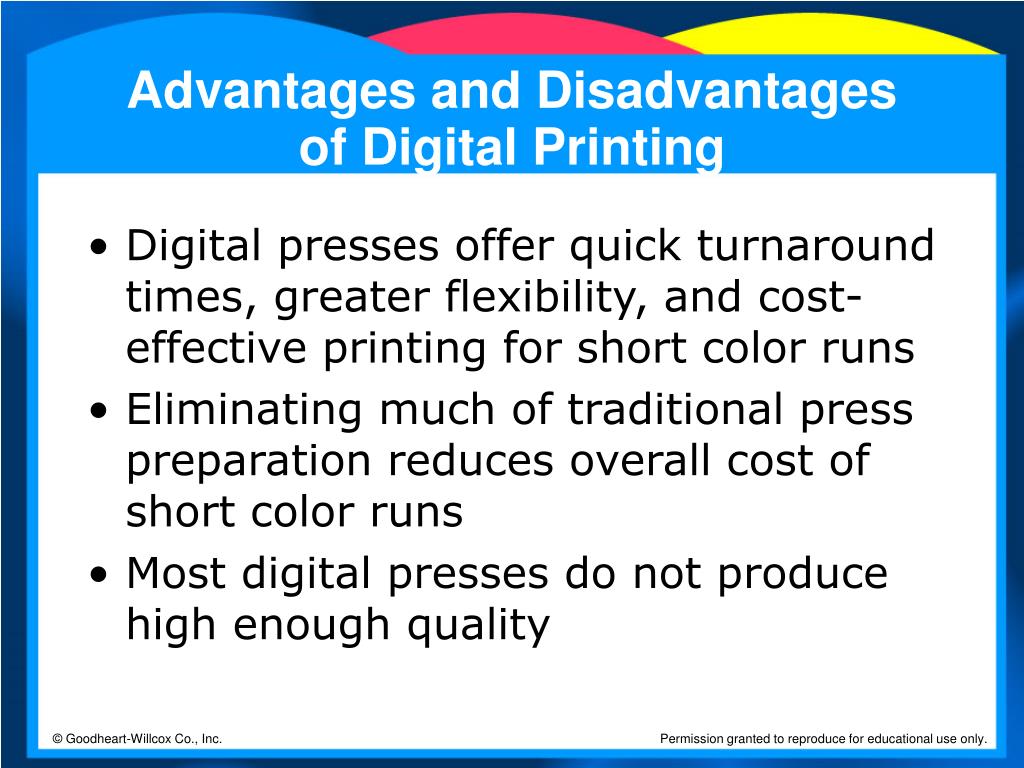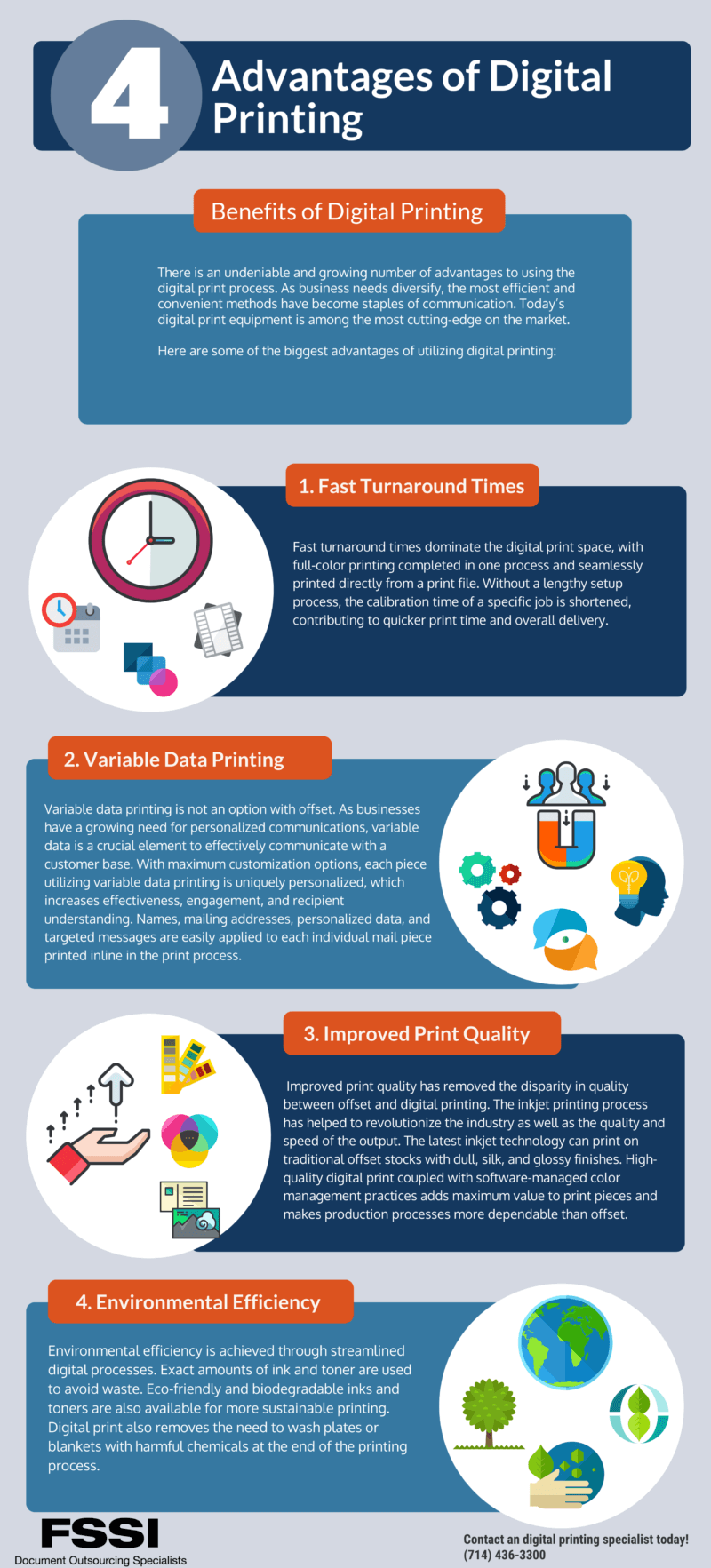The Ultimate Guide To Digital Printing
The Ultimate Guide To Digital Printing
Blog Article
Digital Printing - The Facts
Table of ContentsEverything about Digital PrintingDigital Printing for DummiesThe Digital Printing DiariesThe 15-Second Trick For Digital PrintingOur Digital Printing PDFsThe Facts About Digital Printing Uncovered
Variable data printing, such as straight mail with customized codes and addresses, is ideally suited for digital printing. Digital fast printing just requires four steps of layout, evaluation, printing and binding to obtain whatever done. Digital quick printing has an unrivaled advantage: print on demand.According to PMMI, electronic printing enables brand names and producers to react promptly to customer needs while improving the supply chain, reducing warehousing price and waste, and appreciating faster time to market. That all noises great, yet exactly how does this technology do all that? The significant differentiator of these innovations is that there are no set up fees and no plates with electronic printing.
Some Known Questions About Digital Printing.
This results in quicker turn-around time and decreases price when utilizing electronic printing.
Rapid manufacturing implies getting your product to market much faster. It additionally means it's much easier and faster to make changes later, when you alter a recipe, include a SKU, or develop seasonal packaging. Digital printing is highly versatile, so it's very easy to make changes to the bundle style swiftly. All of it returns to the plates.
More inventory can mean even more waste in the future. With standard printing approaches, short-run printing is simply not possible. Because a wonderful design can make or damage your item, digital printing regularly develops top quality, clear and colorful graphics each time. Digital printing on adaptable bags adds the brilliant, lively, and accurate graphics that practically bid customers to connect and touch them.
Digital printing is the procedure of printing digital-based pictures directly onto a selection of media substrates. There is no need for a printing plate, unlike with offset printing. Digital files such as PDFs or desktop computer posting data can be sent directly to the electronic printing machine to publish on paper, image paper, canvas, material, synthetics, cardstock and various other substrates.
8 Easy Facts About Digital Printing Described
According to PMMI, electronic printing allows brands and suppliers to react rapidly to client needs while improving the supply chain, lowering warehousing cost and waste, and appreciating faster time to market. That all sounds wonderful, but exactly how does this technology do all that? The significant differentiator of these modern technologies is that there are no set-up charges and no plates with electronic printing.
According to Wikipedia, the best distinction in between electronic printing and traditional techniques such as lithography, flexography, gravure, or letterpress is that there is no demand to replace printing plates in digital printing, whereas in these analog printing techniques home plates are repeatedly changed. This results in quicker turnaround time and reduces expense when utilizing digital printing.

Little Known Facts About Digital Printing.
Extra supply can suggest more waste down the roadway. With standard printing approaches, short-run printing is simply not possible. Due to the fact that a great design can make or damage your item, electronic printing constantly produces high-grade, clear and vivid graphics each time. Digital printing on adaptable pouches adds the bright, dynamic, and precise graphics that look at this web-site practically bid customers to reach out and touch them.

According to PMMI, electronic printing permits brands and makers to respond rapidly to client demands while improving the supply chain, decreasing warehousing cost and waste, and delighting in faster time to market. That all sounds great, yet exactly how does this innovation do all that? The major differentiator of these technologies is that there are no set up charges and no plates with digital printing.
Not known Details About Digital Printing
According to he has a good point Wikipedia, the best distinction between electronic printing and conventional approaches such as lithography, flexography, gravure, or letterpress is that there is no requirement to change printing plates in digital printing, whereas in these analog printing approaches the plates are continuously replaced. This leads to quicker turn-around time and reduces price when using digital printing.
Digital printing is extremely adaptable, so it's easy to make changes to the bundle style promptly. It all goes back to the plates.

Getting The Digital Printing To Work
Digital printing have a peek at this site is the procedure of printing digital-based photos straight onto a selection of media substratums. There is no demand for a printing plate, unlike with countered printing. Digital data such as PDFs or desktop computer publishing files can be sent straight to the electronic printing machine to print on paper, picture paper, canvas, material, synthetics, cardstock and other substrates.
Report this page